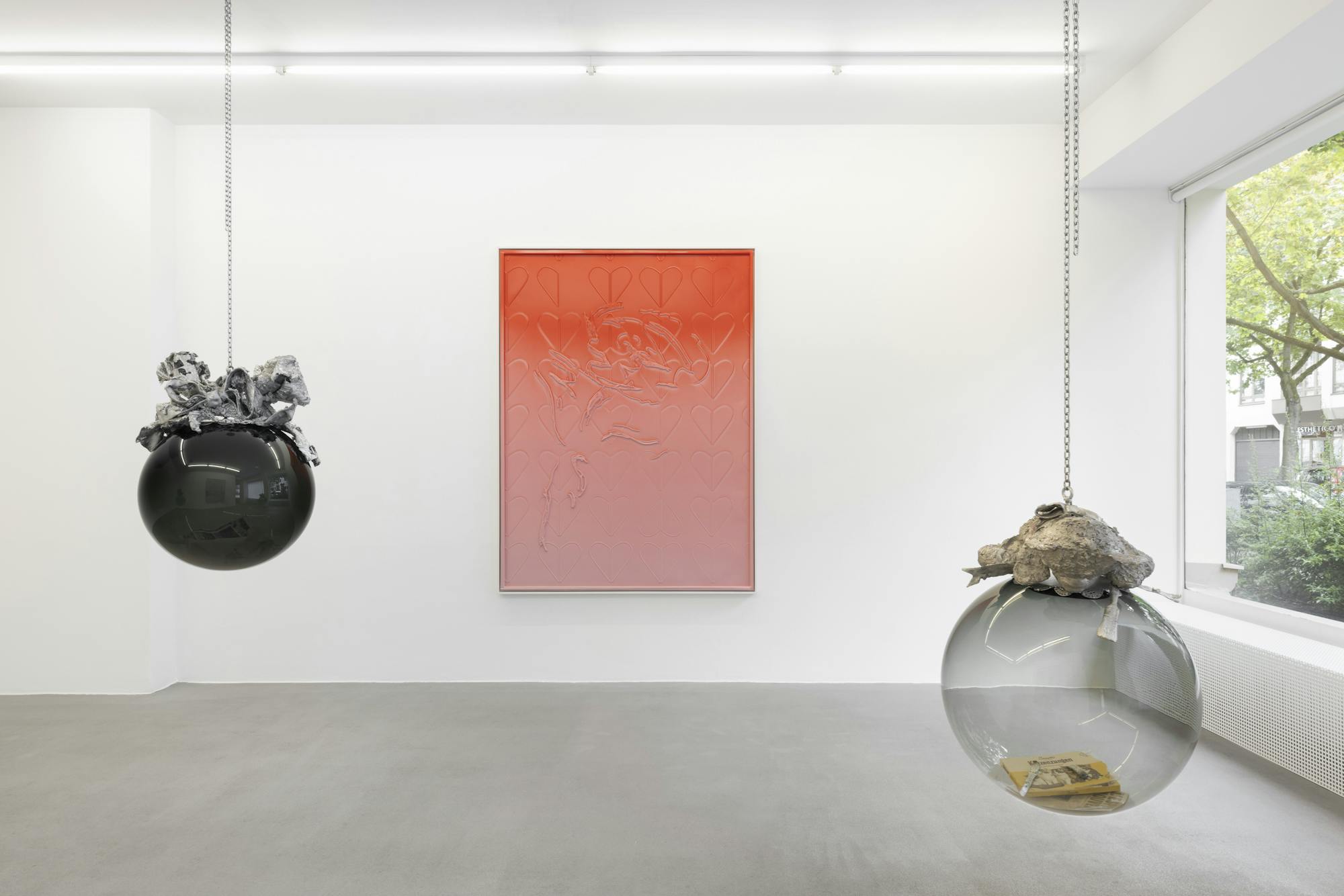Hannah Sophie Dunkelberg on the importance of having a room to your own, her artistic practice and discovering new materials.

"A model, by its very nature, keeps the viewer at a distance to the object."
Kemmler Foundation: Hannah, what was the initial inspiration for your new sculptures?
Hannah Sophie Dunkelberg: My recent work has revolved around the fact that most things are human-made constructs. Once you realize that, you also begin to see them as malleable, flexible to change. Even our beloved teddy bears, hearts, bows, christmas baubles – they are all models of our emotions and fantasies. A model, by its very nature, keeps the viewer at a distance to the object and thus changes our physical encounter with things.
In my recent show, “a room of my own” at Mehdi Chouakri, one new group of works features cast aluminum teddy bears clinging onto and peering into large glass baubles filled with personal stuff.
The title obviously being a reference to...
... Virginia Woolf’s 1929 essay “A Room of One’s Own”, which explores the social and material conditions necessary for women to create literature or in general to develop creative potential. Woolf argues that women need financial independence and a room of their own. For private property, intellectual independence, personal privacy and the right to cultural production.
The baubles I created are metaphors for a room of one’s own, but also literal repositories of meaning, forming highly-symbolic collages of individual and collective experiences and memories.

This is the first time you worked with aluminum. What was your experience during the process?
It felt like a time travel. Not only because this technique has been refined over thousands of years but also because working with aluminum casts truly tests your patience. You must meticulously follow each step and understand the technique thoroughly before you can experiment or deconstruct it for your own creative ideas. Which is what I did. Working on the last sculpture, I suddenly couldn't stand it anymore and it I went back to do a collage of mixed materials. I enjoyed pouring wax all over the sculpture, hammering, bending and affixing stuff.
You mentioned that your sculptural work is strongly influenced by painting.
When drawing I subtract material, I don’t add anything. I use sculptural techniques to draw. My reliefs, for instance, are light scribbles, rendered in a non-fluid, stuttering manner due to the significant force required by the machines I repurpose for drawing or sculpting. To me, this kind of alienation is pure joy. I am not interested in an immaculate surface. You can see imprints of holes and screws. They reveal the traces of the machine’s production, imbuing the imprints of the drawing’s silhouettes with the shape of their creationn this way, my drawings become three-dimensional models.


"I like the idea of disenchanting certain historical narratives."
And vice versa, right?
Exactly. When it comes to sculptures I enjoy adding elements of the painting process to them. Such as pouring wax on the model for the casting like you would pour paint. Or the Miniature BMW Artcar Models I repaint with works of female artists I admire. With my sculptures, I think of abstraction and reality as coexisting and codependent, each propelling the other forward.
Your work often plays with notions of femininity. How do you break with preconceived notions of gender in your artistic practice?
I like the idea of disenchanting certain historical narratives or making them less stable, like I did with my sculptures of sleeping horses. I was amazed by how many monumental bronzes of horses with male heroes you encounter walking through a big city. We are not saved by heroes on horses anymore, are we? I wanted to reassess these historical narratives from a contemporary perspective, so I offered these tired symbols a nap on a sofa. They must be tired after filling this patriarchal role for thousands of years. They need to rest.
Kemmler Foundation supported Hannah Sophie Dunkelberg in creating the works exhibited for "a room of my own" on view from September 15 to October 26 2024 at Mehdi Chouakri.